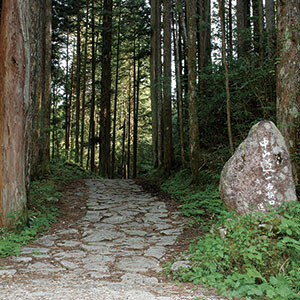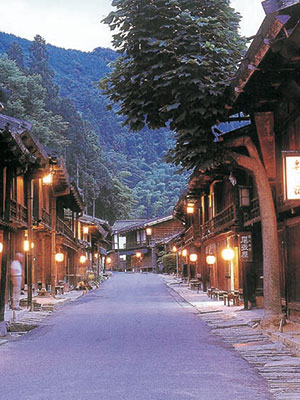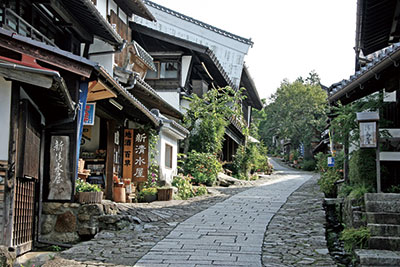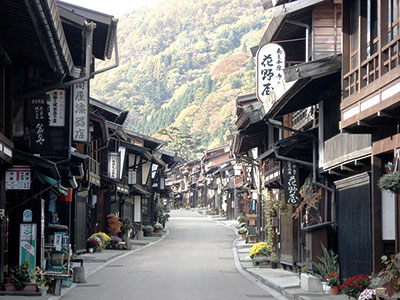Nakasendo
In the age of the Samurai, the Nakasendo acted as an important highway linking Edo and Kyoto. Take a trip from Matsumoto to a post town steeped in Japanese tradition.
-
Tsumago-juku, an Edo-Period post town
Tsumago-juku prospered due to its strategic position at the intersection of the Nakasendo and Inakaido Highways. The streetscape of this post town remains as it was during the Edo Period.
-
Magome-juku, a post town located on a steep slope
Because the town was built along a mountain ridge, it is characterized by old-style houses lining sloped roads.
-
Narai-juku, Japan’s longest post town
Stretching 1 km north to south, Narai-juku has a streetscape lined with historical houses. Here the eaves lights of inns, senbongoshi latticework, and other vestiges of the Edo Period have been greatly preserved.
-

Popular Trekking over the Magome-toge Pass
Trekking the approx. 8 km long ancient flagstone road linking Magome-juku and Tsumago-juku is a popular activity. The glorious view from the Magome-toge Pass, at an altitude of 801 m, will make you forget your weariness.
Magome-juku

Magome-juku was an important post town on the Nakasendo Road, with stone-paved slopes lined with buildings that maintain the atmosphere of a traditional post town. The beauty of the stone-paved slopes and the waterwheel, that operates on the waterway running through Magome-juku, are famous photogenic spots. Mt. Ena and the surrounding mountains are visible from the viewing platform. Many travelers visit here along with the Nakasendo road that connects the adjacent Tsumago-juku and its surroundings.
Tsumago-juku

Tsumago-juku was a post town on the Nakasendo Road that prospered as a key transportation hub connecting other roads. It was the first post town in Japan that preserved its old townscape, and it still retains the historic atmosphere. Many travelers visit here along with the Nakasendo road that connects the adjacent Magome-juku and its surroundings.
Fukushima-juku

Fukushima is one of the post towns on the Nakasendo Road. The Fukushima barrier was one of the four major security checkpoints on the Nakasendo route. Once established, it developed into a large-scale post town. It also acted as the entrance to Mount Ontake, an object of faith. Many of the old buildings no longer remain today due to fire, but the Fukushima barrier was restored and is open to the public as a museum.
Ontake Old Road

The Ontake Old Road is the path historically taken by ascetic monks who worshiped Mt. Ontake, one of Japan's holiest mountains. Started from Fukushima-juku, the road extends to the summit of Mt. Ontake. Along the old road, there are 20,000 monuments dedicated to the ascetics that lend a mysterious air to the road. It is also a popular course for hiking, which lets you enjoy the nature of the Kiso region and how it changes through the seasons.
Narai-juku

Narai-juku is one of the post towns on the Nakasendo Road, located between Edo and Kyoto. The buildings from this area stretch for about a kilometer and are reminiscent of those days. The town's atmosphere attracts many tourists and often acts as a site for filming famous TV dramas.



